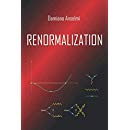Archive for March 2005
I study the problem of renormalizing a non-renormalizable theory with a reduced, eventually finite, set of independent couplings. The idea is to look for special relations that express the coefficients of the irrelevant terms as unique functions of a reduced set of independent couplings $\lambda$, such that the divergences are removed by means of field redefinitions plus renormalization constants for the $\lambda$s. I consider non-renormalizable theories whose renormalizable subsector $R$ is interacting and does not contain relevant parameters. The “infinite” reduction is determined by $i$) perturbative meromorphy around the free-field limit of $R$, or $ii$) analyticity around the interacting fixed point of $R$. In general, prescriptions $i$) and $ii$) mutually exclude each other. When the reduction is formulated using $i$), the number of independent couplings remains finite or slowly grows together with the order of the expansion. The growth is slow in the sense that a reasonably small set of parameters is sufficient to make predictions up to very high orders. Instead, in case $ii$) the number of couplings generically remains finite. The infinite reduction is a tool to classify the irrelevant interactions and address the problem of their physical selection.
JHEP 0508 (2005) 029 | DOI: 10.1088/1126-6708/2005/08/029
arXiv:hep-th/0503131

 Quantum Gravity
Quantum Gravity 


